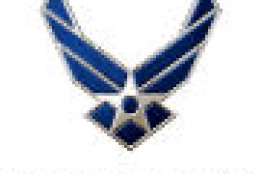Air Force
-
If the last 13 years of foreign wars have shown anything, it's the importance of reserve forces. Brig. Gen. John Flournoy is commander of the 4th Air Force within the Air Force Reserve Command. He's based out of March Air Reserve Base, California. He joined Federal Drive host Tom Temin at the Air Force Association conference and expo at National Harbor.
September 14, 2014 -
The Obama Administration wants to avoid a repeat of the technical glitches it experienced with the rollout of HealthCare.gov. One way is through a White House effort called the U.S. Digital Service. The Digital Service will consist of a small team of experts that will serve as consultants to agencies on IT projects. Ariel Rabkin is a visiting fellow with AEI's Center for Internet, Communications and Technology Policy. He joined Tom Temin on the Federal Drive to explain why many IT projects fail in the first place.
September 14, 2014 -
Both the Army and Air National Guard say they are making inroads toward gaining a foothold for their state-based forces in the Defense Department's growing mission sets in cyberspace. Both services say they are training more personnel and building the guard's credibility within the Pentagon when it comes to cyber missions.
September 03, 2014 -
Air Force's new community partnership program looks to cut the costs of running bases by sharing operating and maintenance costs with the local communities in their neighborhoods.
August 29, 2014 -
Reserve officers face a continuing dilemma. They often want to stay current enough to return to active duty if needed. Yet, they also need to pursue their other professional lives. Now the Air Force is adopting a program pioneered by the Navy and Marine Corps to let them do just that. Col. Rob Romer, chief of the military force policy division, joined Tom Temin on the Federal Drive to discuss the new program.
August 28, 2014 -
Defense Secretary Chuck Hagel says DoD's fleet of A-10 jet fighters can't survive long term budget cuts. But Congress says it doesn't want to write them out of next year's defense budget, so the Pentagon needs to find a different way to pay for the fleet. On In Depth with Francis Rose, Lt. Col. Dan Ward of Hanscom Air Force Base shared a way to save the A-10 using some simple math.
August 20, 2014 -
Agencies are struggling to find a good way to ensure employees have access to only the information they are supposed to have access to. Now, one could be close to a solution. The Air Force is launching a pilot program to test role-based authentication. Federal News Radio's Executive Editor Jason Miller joined Emily Kopp on the Federal Drive with details. Read Jason's related article.
August 15, 2014 -
The service will test out a role-based authentication technology on an application in the MilCloud run by DISA. Frank Konieczny, the Air Force's chief technology officer, said the pilot could move into full production in six months. DoD is considering adding the role-based capability to the JIE framework.
August 15, 2014 -
In order to stay on the cutting edge of mission-focused innovation, the Air Force Research Lab's Information Directorate in Rome, N.Y. conducts research on matters regarding command, control, communications, cyber and intelligence, better known as C4I . On this edition of AFCEA Answers, we'll learn more about the activities of the AFRL Information Directorate from its director, George Duchak. He'll tell us how a newly-developed device that mimics the human brain - a neuromorphic computer - may someday help future Air Force officers make better and faster decisions. We'll also learn how AFRL scientists are teaming with local students to determine how to commercialize the results of their research. And, on this edition of AFCEA Answers, you can glean insights from Mr. Duchak on how to improve the acquisition of information technology.
August 13, 2014 -
Service's latest strategy document sees a future in which it will need to be more flexible and adaptable, including in its acquisition and personnel policies and organizational structures.
July 31, 2014 -
Air Force leadership rolls out a new strategic plan today. "America's Air Force: A Call to the Future" is a 30-year plan that focuses on four key points the Air Force believes will shape the future of air power. But their plan isn't entirely a new concept. Russell Rumbaugh is Director of Budgeting for Foreign Affairs and Defense, and Senior Associate, at the Stimson Center. Russell and his colleague Barry Blechman from Stimson wrote in Breaking Defense about a concept called Strategic Agility. On In Depth with Francis Rose, he explained the connection between today's plan -- as introduced by Secretary James and General Welsh -- and the work he and Barry have done.
July 30, 2014 -
Suicides among active-duty military rose this year compared with the same period last year, but Pentagon officials indicate more service members are seeking help through hotlines and other aid programs. Pentagon documents obtained by The Associated Press show there were 161 confirmed or suspected suicides as of July 14, compared with 154 during the same time frame in 2013. The increase was among the Air Force and Navy, while soldiers and Marine suicides went down.
July 23, 2014 -
U.S.-Russia tensions over Ukraine haven't yet impacted the flow of critical rocket engines to the U.S. space program, but that could change at any time. The military's top space official says another reason to get going on an American-made alternative is to sustain a deteriorating portion of the defense industrial base.
July 23, 2014 -
The F-35 is back in business, at least on a limited basis. The military is allowing some flying capabilities. It was grounded back in June when part of the engine of a U.S. Air Force F-35 A-model broke apart and ripped through the top of a jet as it prepared for take-off. As a result, the plane will not fly in the Farnborough International Airshow in England.
July 16, 2014 -
The Air Force will offer early retirement and buyouts to civilian personnel, in order to eliminate nearly 3,500 positions, officials announced Monday. The service estimates the cuts will save the Air Force $1.6 billion over the next five years.
July 15, 2014









